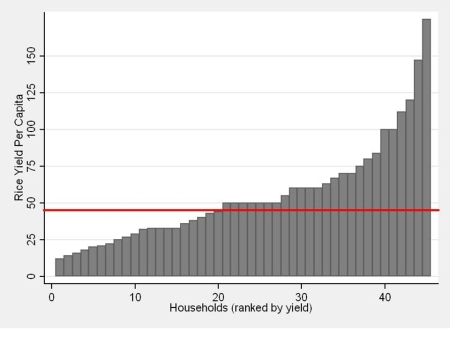A few days ago I reported on research (by Runako Samata) suggesting that the upland rice production of many Karen farmers in northern Thailand does not meet basic consumption requirements. In response, regular New Mandala reader Johpa made the following important comment:
I have never lived in a Karen village that did not have some padi land. In the two Karen villages I lived in, there were those with padi and those without padi land. Those without padi land planted hill rice. The hill rice never was sufficient for a years supply of food. Those without padi land would supplement their rice by helping with the planting and harvesting of the padi rice of others in exchange for a pre-arranged amount of harvested rice.
I should note that both villages were settled in the 20th century by Karen immigrants who originally hailed closer to the Burmese border. I would think that the potential for developing rice padi in these under-populated, and at the time rather remote foothill areas, was a prime motivator for making the move.
Runako’s research underlines the importance of Johpa’s comment. In addition to examining the rice production of Karen households who relied completely on upland fields, she also examined those who grew rice on paddy fields. Here a rather different picture emerges. (This graph shows farmers who only grow paddy rice; the graph for farmers who grow paddy rice and upland rice is broadly similar.)
Clearly paddy cultivation is much more successful in meeting rice requirements (the red line is an estimate of per-capita annual rice needs – the unit is thang, about 10 kilograms). This is a result of the higher productivity of paddy cultivation both in terms of land used and labour invested. And, as Johpa indicates, the relatively high productivity of paddy generates a surplus that supports (in the form of payments for labour) those with lower levels of rice production.
 Facebook
Facebook  Twitter
Twitter  Soundcloud
Soundcloud  Youtube
Youtube  Rss
Rss 